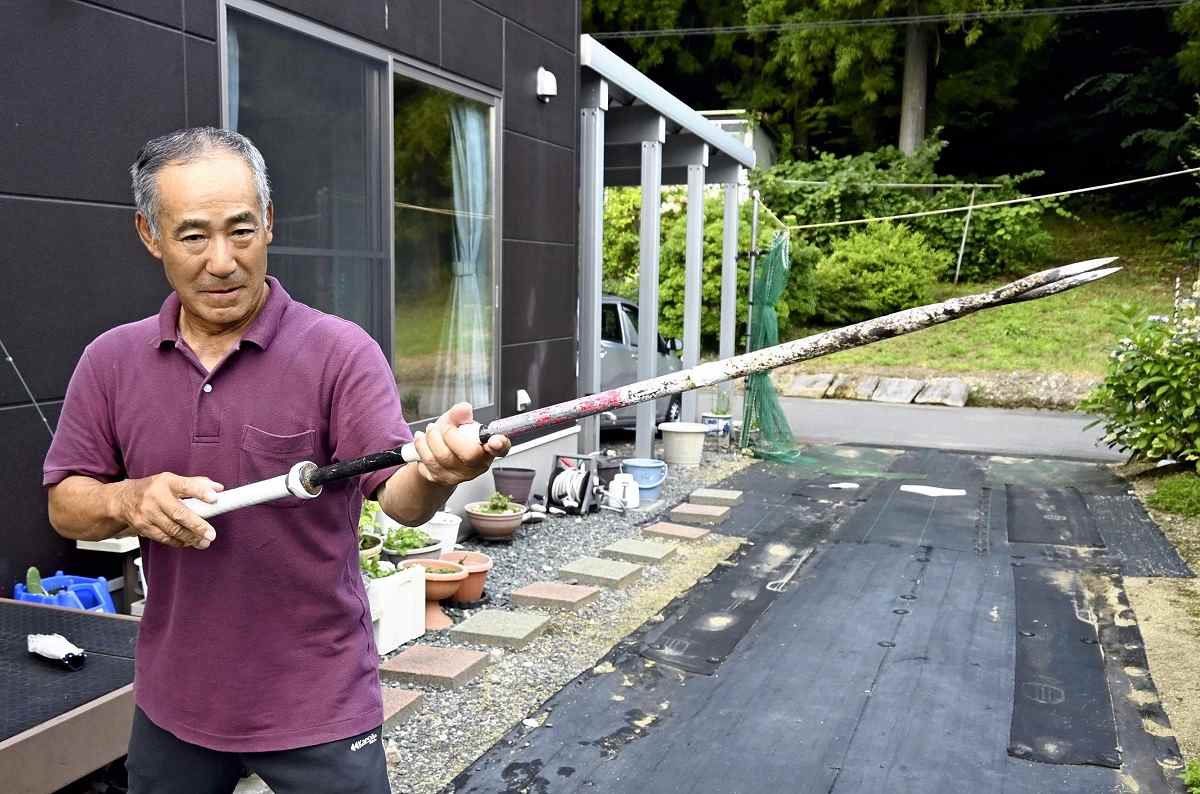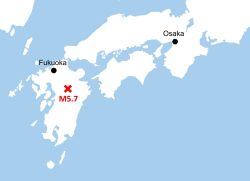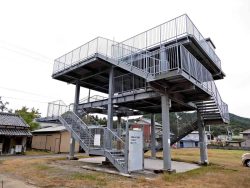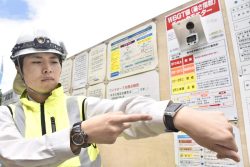2 Men Describe Encounters with Bears in Japan’s Iwate Prefecture; Authorities Advise Wearing Noisy Equipment to Repel the Animals

Tadashi Saito talks about a time he fended off a bear with a stick, in Miyako, Iwate Prefecture.
1:00 JST, October 13, 2024
MORIOKA — Bears become more active in autumn before they hibernate. In Iwate Prefecture, more than 40% of incidents with humans during the last fiscal year occurred between September and October, when an increasing number of people visit the mountains to collect mushrooms.
Two men who encountered bears have spoken to the The Yomiuri Shimbun about the pain that they still suffer from as well as the importance of being prepared and what countermeasures can be taken.
“I had no time to shout or feel fear,” said a man in his 60s, who encountered a bear while climbing a mountain in southern Iwate Prefecture in May. The man suffered facial wounds in seven places.
On the day of the attack in the early hours of the morning, the man was hiking alone. Halfway up the mountain, he felt an eerie silence and a bear suddenly appeared from a bush about three meters away from him. The bear pounced and one of its paws pressed against the man’s face. It then bit the man near his mouth. The whole incident only lasted a few seconds before the bear disappeared.
The man returned to the base of the mountain, taking his time as he feared another attack. During the descent, which took about an hour, he saw other bears on two other occasions. He was transported to a hospital by a medical helicopter and underwent surgery.
Since the incident, the man wears a hat and face mask whenever he goes out to hide the scars on his face. He says he worries about getting criticized for hiking a mountain despite the high chance of encountering bears.
“It was a miracle that I could descend the mountain on my own,” he said. “If I was attacked again, I might have died.”
Tadashi Saito, a 73-year-old part-time worker in Miyako, Iwate Prefecture, came across a bear one early evening in May while he was in the mountains near his house collecting wild vegetables. At the time, he was carrying a metal stick measuring about 120 centimeters with sharp double forks, which he has carried in case of a bear encounter.
Although Saito saw dung on the mountain path, he continued walking, thinking he would be all right if he was careful. He had never encountered a bear before.
While he was collecting plants, he heard rattling sounds. Immediately after that, a bear measuring about a meter long approached him with its mouth wide open. Its white claws, about 10 centimeters long, gleamed on its front legs.
Saito prepared himself as he knew running away was impossible, but by chance the tip of the metal stick pricked the bear’s throat, and the animal fled.
“It just happened to work out for me. I could have died,” the man said. “Rather than repel them, I want people to make an effort to avoid encountering bears.”
Carry bells, radios
According to the Tohoku Regional Forest Office, the amount of nuts from beech trees, which are a food source for bears, is set to increase this autumn. Therefore, the risk of bears appearing in residential areas is expected to decrease. However, as bears increase their activity in their search for food to prepare for hibernation, the prefectural police are calling for people to carry equipment that makes a noise, such as bells and radios, even while carrying out agricultural work.
The prefectural government recommends that if people encounter a bear, they quietly and slowly step back while maintaining eye contact. If a bear attacks, use both arms to protect your head and face and lie face down to minimize physical damage and avoid fatal wounds.
"Society" POPULAR ARTICLE
-

M4.9 Earthquake Hits Tokyo, Neighboring Prefectures
-

Israeli Tourists Refused Accommodation at Hotel in Japan’s Nagano Pref., Prompting Protest by Israeli Embassy and Probe by Prefecture
-

M7.5 Earthquake Hits Northern Japan; Tsunami Waves Observed in Hokkaido, Aomori and Iwate Prefectures
-

Tsukiji Market Urges Tourists to Avoid Visiting in Year-End
-

M5.7 Earthquake Hits Japan’s Kumamoto Pref., Measuring Upper 5 Intensity, No Tsunami Expected
JN ACCESS RANKING
-

Tokyo Economic Security Forum to Hold Inaugural Meeting Amid Tense Global Environment
-

Keidanren Chairman Yoshinobu Tsutsui Visits Kashiwazaki-Kariwa Nuclear Power Plant; Inspects New Emergency Safety System
-

Imports of Rare Earths from China Facing Delays, May Be Caused by Deterioration of Japan-China Relations
-

University of Tokyo Professor Discusses Japanese Economic Security in Interview Ahead of Forum
-

Japan Pulls out of Vietnam Nuclear Project, Complicating Hanoi’s Power Plans






















